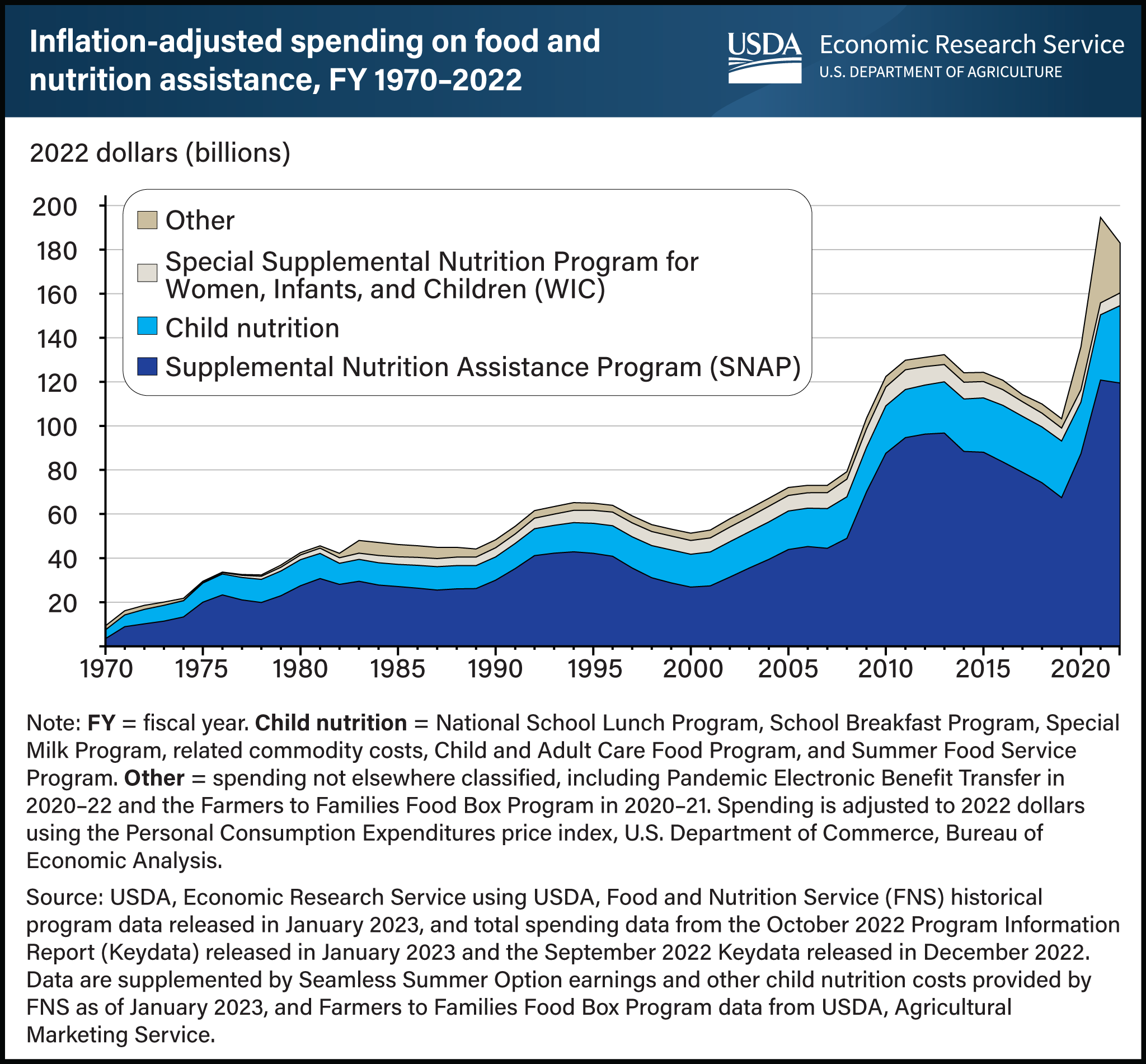Total spending on USDA’s food and nutrition assistance programs fell in FY 2022, but still higher than before pandemic
- by Jordan W. Jones and Saied Toossi
- 6/21/2023

USDA, Economic Research Service (ERS) released “The Food and Nutrition Assistance Landscape: Fiscal Year 2022 Annual Report” on Wednesday, June 21, 2023. The report examines program trends and policy changes in USDA’s largest domestic food and nutrition assistance programs through fiscal year 2022. An overview of the annual ERS report will be provided in a webinar at 1 p.m. EDT, Wednesday, June 21. To join or register, click here.
Federal spending on USDA’s food and nutrition assistance programs totaled $183.0 billion in fiscal year (FY) 2022, down 6 percent from the record-high spending of $194.7 billion in FY 2021, adjusted for inflation to 2022 dollars. Before adjusting for inflation, total FY 2021 spending was $183.3 billion. In FY 2022, the Supplemental Nutrition Assistance Program (SNAP) maximum allotment permanently increased after the Thrifty Food Plan was re-evaluated, and several States also ended SNAP emergency allotments, which temporarily raised all recipients’ benefits to at least the maximum for their household size. SNAP spending totaled $119.5 billion in FY 2022, 1 percent less than the inflation-adjusted record-high spending in FY 2021. Spending on the Special Supplemental Nutrition Program for Women, Infants, and Children (WIC) totaled $5.7 billion—an increase of 7 percent from inflation-adjusted spending in FY 2021—reflecting an increase in program food costs per participant. Combined spending on child nutrition programs totaled $35.1 billion in FY 2022, increasing 19 percent from the inflation-adjusted total in the previous year. This increase was driven by a greater number of meals served through these programs in FY 2022 compared with FY 2021, as well as higher reimbursement rates for meals served. Combined spending on other programs fell in FY 2022 primarily because of lower spending on Pandemic Electronic Benefit Transfer (P-EBT) and the expiration of the Farmers to Families Food Box Program midway through FY 2021. This chart is based on data available as of January 2023 and appears in the USDA, Economic Research Service’s Food and Nutrition Assistance Landscape: Fiscal Year 2022 Annual Report, released June 2023.


